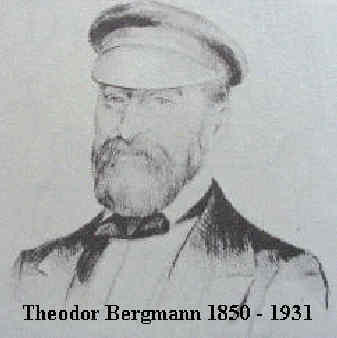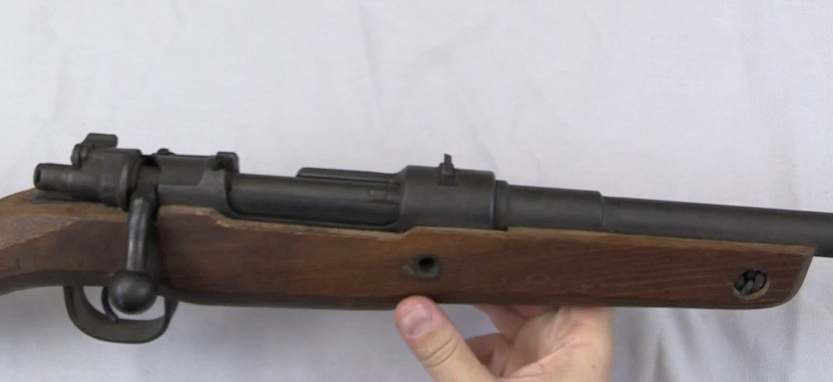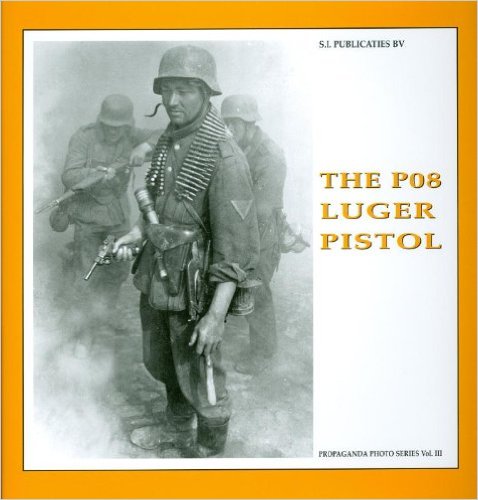“Captured Arms (Beutewaffen)” by Guus de Vries is Volume 9 of the Propaganda Photo Series by SI Publicaties out of the Netherlands. I really like the whole series, as they do a very good job of combining really interesting original photos with engaging and fact-dense writing. This volume is a bit different from previous books that specialize on individual weapons, as it covers the whole vast range of foreign arms captured and used by the German military during World War II. Its main chapters cover each of the 12 main countries that Germany acquired arms from (Austria, Belgium, Czechoslovakia, Denmark, France, Greece, Italy, the Netherlands, Norway, Poland, Russia, the UK, the US, and Yugoslavia).
Each chapter provides an explanation of how the Germans got the weapons in question and what specifically they used. In some cases arms factories were kept in production, and sometimes captured arms were converted to use German ammunition instead of whatever they had been originally designed for (like the DP-28, for instance). In some cases, the arms being captured were actually German arms taken as war booty after World War I! It is very interested to see the context for what was being reused by Germany, and I tihnk many people do not appreciate the true extent to which Germany depended on captured arms during the war.




“I tihnk many people do not appreciate the true extent to which Germany depended on captured arms during the war.”
This also apply to heavier weapon (wide range of captured artillery pieces were used) as well trucks, which are crucial for providing supplies for fast moving units. I am wondering how they manage to keep it in use, despite great variations between trucks coming from different countries, if not manufacturers.
Germany used a lot of french heavy artillery in Russia 1941-1942. Later soviet 122mm field howitzer was also heavily used.
The same thing occured in 1914-1918 : On the Western front, Imperial Germany used captured Russian obsolete guns (without recoil system) for static defense.
“same thing occured in 1914-1918 : On the Western front, Imperial Germany used captured Russian obsolete guns (without recoil system) for static defense”
French forces also used obsolete guns, although in their case it was just older pattern rather than captured: https://en.wikipedia.org/wiki/De_Bange_155_mm_cannon
At the end of 1914, all countries took out of storage obsolete gun.
Not enough modern artillery for a war of this size.
Germany during World War II not only press into service French service/equipment as is but also used it for creation of new weapon-carrier combinations, see: https://en.wikipedia.org/wiki/Alfred_Becker
One of vehicles made were S307(f) Reihenwerfer, see photos:
https://www.flamesofwar.com/hobby.aspx?art_id=614
peculiar form of self-propelled mortar
Let me guess:
-Hotchkiss LMG 105 (f) 1922 in 6.5mm : export model for Greece 1926 LMG in 6.5×54 Mannlicher Schönauer
-Hotchkiss LMG 106 (f) 1922 in 8mm : export model for Turkey or Greece 1926 LMG in 8mm Mauser
-Hotchkiss LMG 107 (f) model 1924 : ???? What is the caliber ? Maybe in 7mm Mauser for Spain (model 1925) ?
I doubt there were any Hotchkiss LMG (f) 1934 in 7.5×54 : all of them were in Syria and/or Indochina in 1940.
Forgive me if I missed it, but is this book available in English?
Ian: Where was this book review video made? That is a mighty nice collection of French military rifles behind you. It was kind of distracting, too many stimuli. (I wanted you to reach back and close the partially open bolt on one of the Berthier carbines)! Interesting Polish Resistance shirt. What’s the Back Story?
That’s his own collection. He collects French firearms. He did a video on his collection within the past couple of years. You should be able to find it if you search for it.
I think there is a misunderstanding of the german framdgerät system. I’ve read that the numbers of most of this guns were given before the war. So it,s irrelevant if the germans captured it or not. If you look at at the bottom of this list of artillery you’ll see 755(a). A 16 inch railwaygun model M1920. The germans didn’t capture any of those.
http://users.telenet.be/bunkers2/fremdgerat.htm
“german framdgerät system. I’ve read that the numbers of most of this guns were given before the war. So it,s irrelevant if the germans captured it or not.”
fremden Gerät not framdgerät.
Official list of captured small arms is
D.50/1 Kennblätter fremden Geräts. Heft 1: Handwaffen. (Unvollständig)
available for viewing and downloading (pdf) here:
https://pl.scribd.com/document/220927290/D-50-1-Kennblatter-fremden-Gerats-Heft-1-Handwaffen-Unvollstandig-pdf
Names of relevant documents for other kind of weapons can be found at page 2.
For example D.50/8a is Munition bis 3.6 cm (ammunition up to 36 mm caliber).
Notice that page for each weapon has data on it, for example Zielfernrohrgewehr 247(a) has 1.10.44
As with all enemy ordnance data, some mistakes were done.
For example Maschinepistole 763 (a) which judging from image is M3 Grease Gun original name is believed to be Sub Maschin Gun Cal .45″ M3 (Brief Case’ Gun)
BTW: I found Pistolet mitrailleur Type E.T.V.S. which picture can be seen here: https://heroesandgenerals.com/forums/topic/63076-france-faction-idea-reworked-updated/
(click Reveal hidden contents below -Pistolet Mitrailleur Type ETVS – German : Machinepistole 721(f))
Apparently it was folding design (see photo), here cyclic Rate-of-Fire is given as 500 rpm when D.50/1 states 200-250 rpm. Which is true?
I read this in the UK, and I do not remember there ever being “a link in the text below.” that I could click. This may be because I rarely want to click on, and today just happens to be a forgotten web link, but if it’s an issue with this specific web place for forgottenweapons.com then I’ll happily watch Ian via another web place.
I copied and pasted the title. and at 30 UK Sterling I fancy it, but I’ll probably rather get closer to being a patreon of forgottenweapons.com
By the way. I came across this page, with a lot of fremdgerät numbers for small arms. As I said above, there should also be numbers for other nations weapons. (Swedish, Swiss etc.) Sadly they are not included.
http://www.axishistory.com/other-aspects/equipment/138-equipment/equipment/4257-fremden-geraet-captured-small-arms
Thank you for the link Sandaker; but it has opened a potential marching through mud conflict. The first two numbers for UK weapons are:
Gewehr 248(e) Ex “Rifle Winchester 30/30” – Calibre .300
Gewehr 249(e) Ex “Rifle Springfield” – Calibre .300
How the hell did Germany capture enough of those guns to give them a number? Were they captured in WWI, hidden, and mis-documented? Was the Springfield issued to the British Army?
As I have understod, the German army originaly made this list before WW2. Since this work was based on what they thought the other nations had, it was not complete or accurate.
My main point is that they didn’t have too capture a weapon before they gave it a “Fremder gerät” number. They did add too the list when new weapons were known though.
The neutral United States shipped something like a quarter milliom of its reserve stocks of old bolt actions–mostly M1917s, but some Springfields–25k BARs, tens of thousands of machine guns, mortars, etc. and a quarter of its ammunition stocks (approx. 250 rounds per rifle) to Raritan, NJ. There, these were “sold” to U.S. Steel. U.S. Steel then handed them over to His Majesty’s Government for about $38 million. Astutely, the UK .303 weapons all went to the regulars and territorials. All the U.S. non-standard gear went to the Home Guard.
I recall reading that the German Army was using 35 different makes of truck on their way into France. And that the Barbarossa campaign would have been impossible without the road transport captured in France.
The Hollywood impression that all Germans were carrying Mausers, MP40s, lugers, Walthers etc. is obviously far off the mark.
It’s not until spring 1941 that the German Army was fully prepared.
As Ian stated in a previous video, MG34 was declared standard only at the beginning of 1941.
I studied a bit the battle of Poland/France/Norway : The Germans had less than 40’000 Submachine guns (all types) in May 1940 and 9 divisions were called the “czeh divisions” because 80 % of their small arms and artillery were from czeh origin.
“The Hollywood impression that all Germans were carrying Mausers, MP40s, lugers, Walthers etc. is obviously far off the mark.”
Similarly to every German tank = Tiger.
“battle of Poland”
It is worth noting that during Fall Weiss most bulk of German armored forces were Pz.Kpfw.I and Pz.Kpfw.II according to
http://www.achtungpanzer.com/invasion-of-poland-fall-weiss.htm
German Panzer force as of September 1st of 1939 had 1445 PzKpfw I, 1223 PzKpfw II light tanks and 98 PzKpfw III, 211 PzKpfw IV medium tanks. It addition, there were 215 command tanks and other armored vehicles including 202 ex-Czech PzKpfw 35(t) and 78 PzKpfw 38(t)
Not entirely. The frontschwein for much of the war could expect German or Czech-produced standard pattern German arms. Rear echelon divisions and follow-on units would have Austrian, Polish, etc. weapons reasonably similar to the standard, and in the same caliber. Occupation forces, however, made do with the arms seized during conquest.
By 1944, of course, things are different: 12th HJ SS Panzer division with Kriegsmarine and Italian uniform items, the cessation of MP40 production and wholesale adoption of the Italian Beretta SMG, and the “organization” of the Volkssturm with a real mishmash of captured enemy weapons… Mostly the Italian Carcano, since the Germans retained control over much of that unhappy occupied nation and were therefore able to pillage it more efficiently, versus, say, the situation on the Eastern Front, where Soviet offensives “took back” equipment lost initially in ’41-’42 handed over to various “Im dienst der Deutscher Wehrmacht” Auxiliary, Polizei, HiWi, and collaborationist units, forces in the Baltic States, etc.
By late war, all those 35 different types of trucks needed 35 different sets of spare parts. It became a mechanics’ nightmare finding the correct spare parts. The German War effort never had enough trucks to properly supply front-line troops and the huge inventory of spare parts further slowed resupply. By late war, all those captured trucks proved more of a curse than a blessing.
The German army in WWII used almost double the numbers of horses in WWI!
Nazi “lend lease…” Not lent. Not leased. Just booty and pillage.
And bring in millions of foreign and slave laborers where they could not be exploited under one or another occupation regime. Interesting to note what factories maintained production under German administration, like Brno/Brünn, Radom, Beretta, etc.
Same held true in Fall Gelb:
523 Mk. I light tanks (armed with twin 7.92mm machine guns), 955 Mk. IIs (one 20mm cannon and a machine gun), along with commandeered and German-occupation-produced Czech T35t (106) and 228 T38t (“t” for tschekische) tanks as well as smaller numbers, of Mk. III and Mk. IV models featuring more powerful 37mm and 75mm cannon (349 and 278 respectively, with a total of 2,439 Panzers total). Three of the ten Panzer divisions, including that of Erwin Rommel, the 7th, had primarily Czech tanks. The French had a total of 4,111 tanks, of which 3,254 were stationed in the northeast ahead of 10 May. Some WWI-era tanks guarded airfields, but many of the French models were superior to German designs, such as the 47mm gun-equipped SOMUA and some others. The British had 310 tanks when the offensive began, but 330 additional armored vehicles crossed the channel by late May.